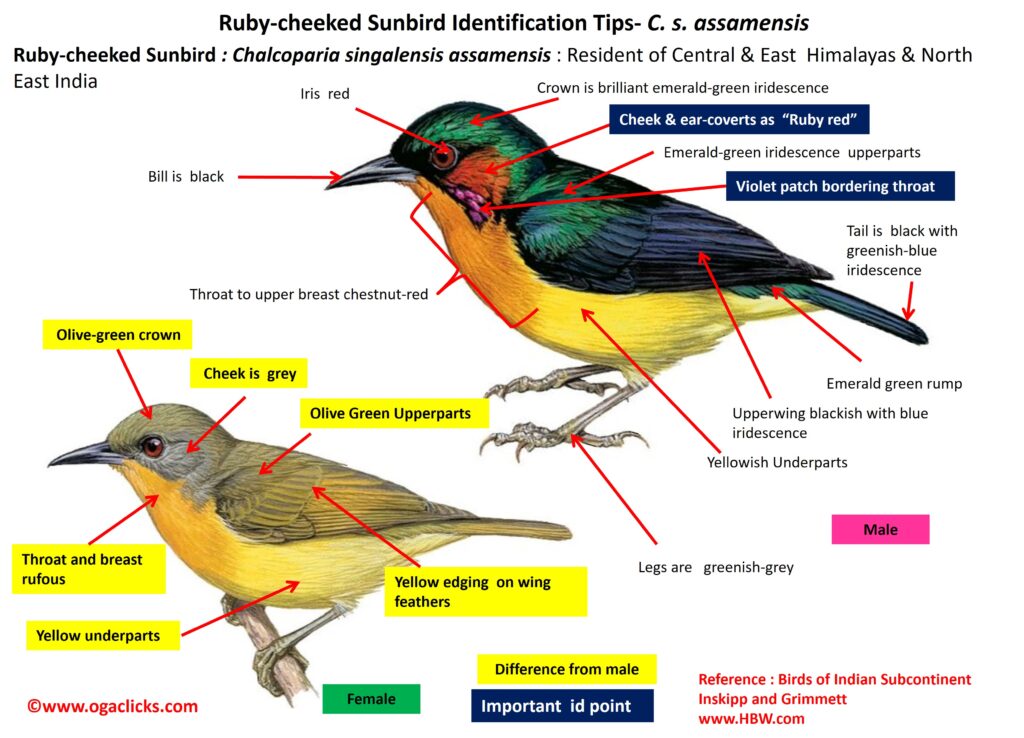
Ruby-cheeked Sunbird Chalcoparia singalensis assamensis
Etymology:
- Chalcoparia : Greek word khalkopareos – with cheeks of bronze
- Singalensis : From Ceylon, modern Srilanka
- Assamensis : From Assam, India
Vernacular Names: Cachar: Daotisha sundai
Subspecies :
- s. assamensis- Central and Eastern Himalayas, North East India (South from Assam)
Distribution : Central and Eastern Himalayas, North East India (South from Assam)
Description : Size of 10–11 cm; wt. of male 8·2–9·1 g, wt. of female 8·6 g. The male of nominate race is dark with brilliant emerald-green iridescence above; upperwing is blackish, with blue iridescence on shoulder; tail is black with some greenish-blue iridescence; ear-coverts and cheek are copper, violet patch bordering throat. The throat to upper breast is chestnut-red, rest of underparts are yellow. The iris is red; bill is blackish; legs are greenish grey. The female is olive-green above, has upperwing dark, with yellow on wing-coverts and edges of remiges, cheek is grey, throat and breast are rufous, rest of underparts is yellow. The juvenile differs from female in having yellow throat concolorous with rest of underparts. Races differ mainly in coloration of underparts: assamensis The male differs from nominate in having darker throat, less extensive red below. The female has paler, more greenish upperparts and more brightly yellowish posterior underparts than nominate.
Habitat: It is found in mangroves, regenerating forest, and forest edge, also coastal and riverine vegetation, plantations, coconut groves and gardens. Found from sea-level to 1000 m.
Food habits: It eats Insects, including caterpillars, and spiders , fruit, pollen and nectar. It forages in upper storey, occasionally lower. It often feeds at spider webs. It probes flowers for nectar, and gleans insects from leaves.
Breeding habits: They breed in Feb and laying happens in Mar to Jun in India . The male feeds the female in courtship. The nest is shaggy and pear-shaped, with porch, made from cobwebs and various plant materials, including roots, fibres, fern stalks, dry grass and moss, suspended from end of drooping twigs of bush m above ground, often under steep bank and never in exposed site. They lay a clutch of 2 eggs. The nestlings and fledglings tended by both parents. The nests is parasitized by Violet Cuckoo.